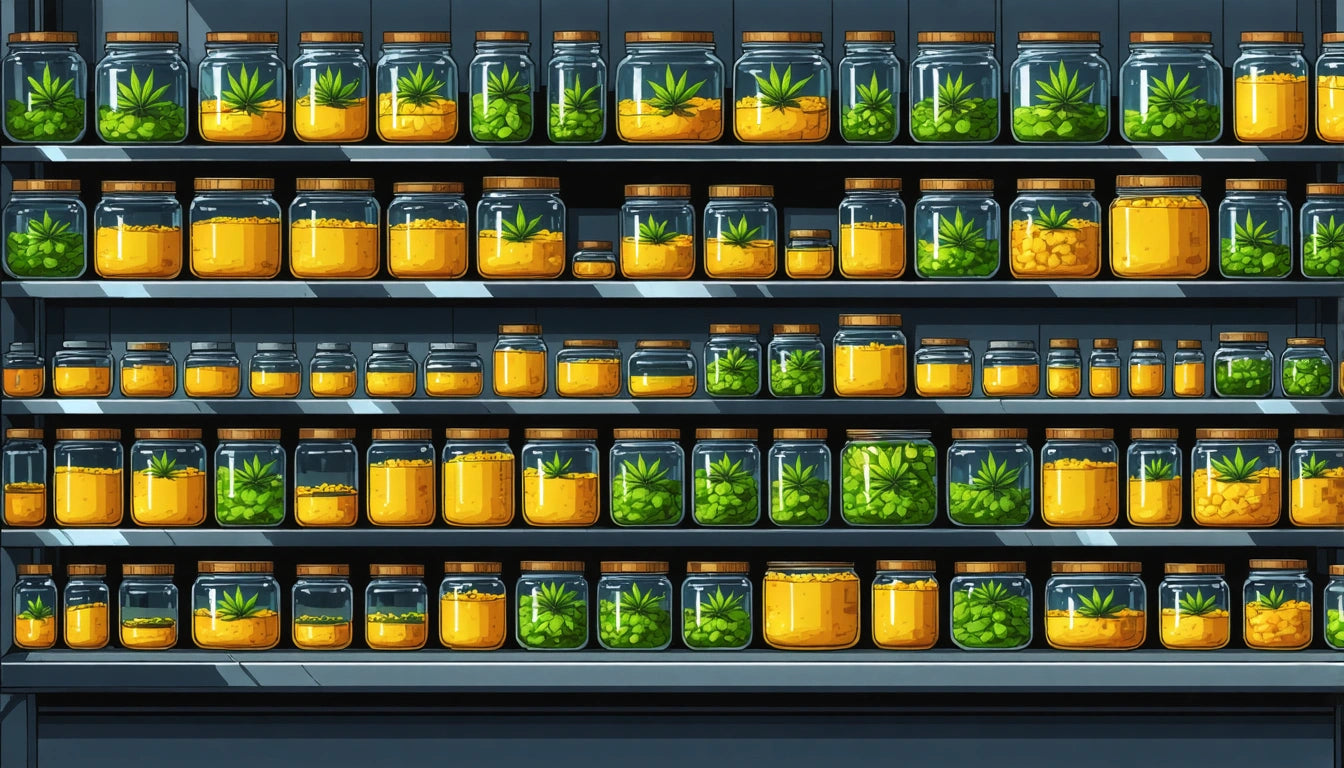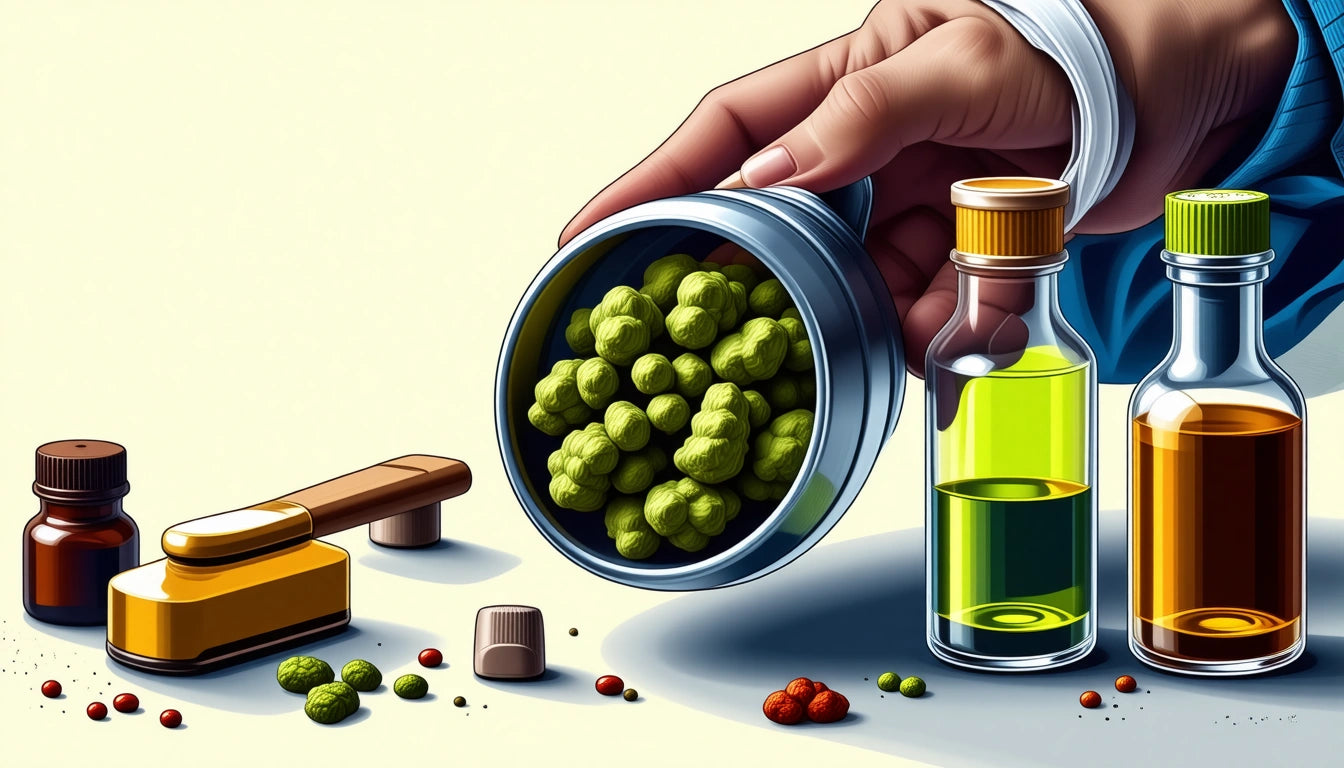Table of Contents
Cannabis concentrates represent some of the most potent and flavorful products available to consumers today. However, their high cannabinoid and terpene content makes them particularly susceptible to degradation when improperly stored. Understanding proper storage techniques is essential for maintaining the quality, potency, and therapeutic benefits of these premium products.
Understanding Cannabis Concentrates
Before diving into storage methods, it's important to understand what makes concentrates unique. As detailed in this overview of cannabis concentrates, these products are extracted forms of cannabis with significantly higher THC or CBD levels compared to flower. The extraction process removes plant material to isolate cannabinoids and terpenes, resulting in products that can range from 60% to over 90% cannabinoid content.
The variety of concentrates available is extensive, with differences between shatter, wax, budder, and rosin affecting not only consumption methods but also optimal storage approaches.
Factors Affecting Concentrate Degradation
Heat Exposure
Heat accelerates the decarboxylation process, converting THCA to THC and eventually to CBN, which is less psychoactive and more sedative. This changes both potency and effects over time.
Light Exposure
UV light breaks down cannabinoids and terpenes, reducing potency and altering flavor profiles. This is why many concentrates come in opaque or amber containers.
Oxygen Exposure
Oxidation degrades cannabinoids and terpenes, affecting both potency and flavor. This process is accelerated when concentrates are exposed to air for extended periods.
Humidity
Excess moisture can promote mold growth, while too little can dry out certain concentrate types. The ideal relative humidity varies by concentrate consistency.
Ideal Storage Containers
The right container makes a significant difference in preserving concentrate quality:
- Glass containers: Borosilicate glass jars are non-reactive and won't leach chemicals into your concentrates.
- Silicone containers: Good for sticky concentrates like budder or wax, but may not be ideal for terpene preservation long-term.
- PTFE sheets: Non-stick and chemically inert, perfect for shatter and other sticky concentrates.
- Parchment paper: A budget option for short-term storage of stable concentrates.
- Mylar bags: For bulk storage, high-quality mylar storage bags with proper sealing can protect larger quantities from light and air exposure.
The container should always be appropriately sized to minimize air space, which reduces oxidation potential.
Temperature and Environmental Considerations
Temperature management is crucial for concentrate preservation:
Refrigeration (36-46 °F)
Most concentrates benefit from refrigeration, which slows degradation processes. This is particularly important for terpene preservation in live resins and sauce products, which are known for their flavorful profiles.
Freezing (Below 32 °F)
Long-term storage can benefit from freezing, particularly for stable concentrates like shatter or isolate. However, this requires proper defrosting techniques to prevent condensation when returning to room temperature.
Room Temperature Storage
If refrigeration isn't possible, store in the coolest, darkest place available. Temperature stability is important, as fluctuations can degrade quality faster than consistent moderate temperatures.
According to this comparison of concentrates to flower and vapes, the higher potency of concentrates makes proper storage even more critical, as degradation can significantly impact the user experience.
Proper Handling Techniques
Even with ideal containers and environments, improper handling can compromise your concentrates:
- Use clean, dry tools when handling concentrates
- Minimize time containers remain open
- Allow refrigerated concentrates to reach room temperature before opening to prevent condensation
- Keep containers sealed when not in use
- Consider using gloves to prevent transferring oils from fingers
These practices help maintain the integrity of concentrates regardless of consumption method.
Storage Recommendations by Concentrate Type
Different concentrates have unique storage requirements:
Shatter
Best stored on PTFE sheets or parchment paper in airtight containers. Refrigeration helps maintain its glass-like consistency.
Budder, Badder, and Wax
These softer concentrates do well in silicone or glass containers. Their consistency makes them less likely to stick to containers.
Live Resin and Sauce
These terpene-rich products benefit most from refrigeration in airtight glass containers to preserve their complex flavor profiles.
Rosin
As a solventless extract highlighted in this comparison of extraction methods, rosin benefits from refrigeration and minimal handling to preserve its natural properties.
Long-Term Preservation Strategies
For those looking to store concentrates for extended periods, consider these advanced techniques:
- Vacuum sealing to remove all oxygen before freezing
- Using humidity control packs designed for cannabis products
- Separating large quantities into smaller portions to limit exposure when accessing
- Documenting storage dates to track age and potential degradation
With proper storage techniques, many concentrates can maintain their quality for 6-12 months or longer, allowing medical users to benefit from consistent dosing over extended periods.
By implementing these storage practices, concentrate enthusiasts can ensure they're getting the most value, potency, and enjoyment from their products while avoiding the disappointment of prematurely degraded extracts.











Leave a comment
All comments are moderated before being published.
This site is protected by hCaptcha and the hCaptcha Privacy Policy and Terms of Service apply.